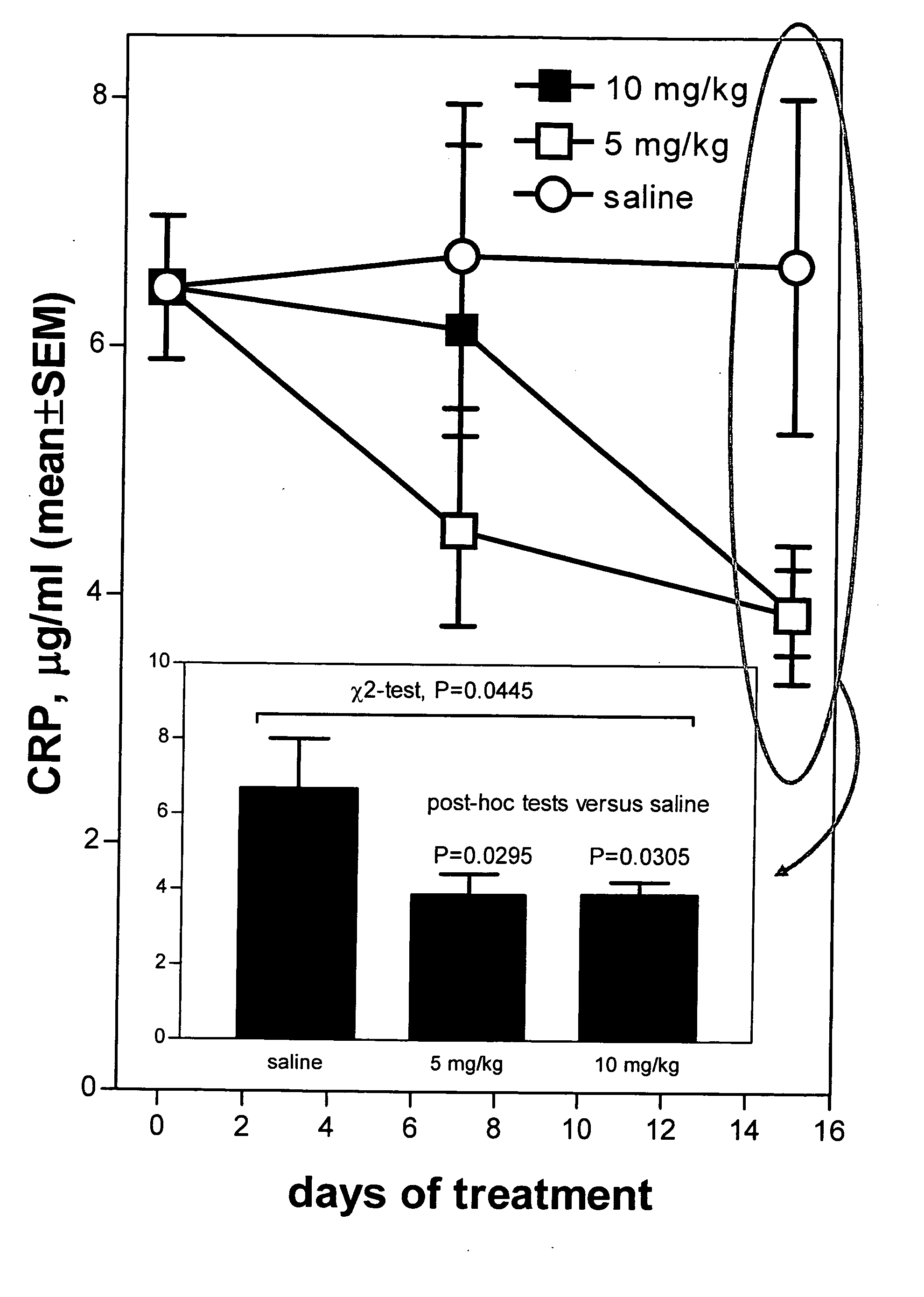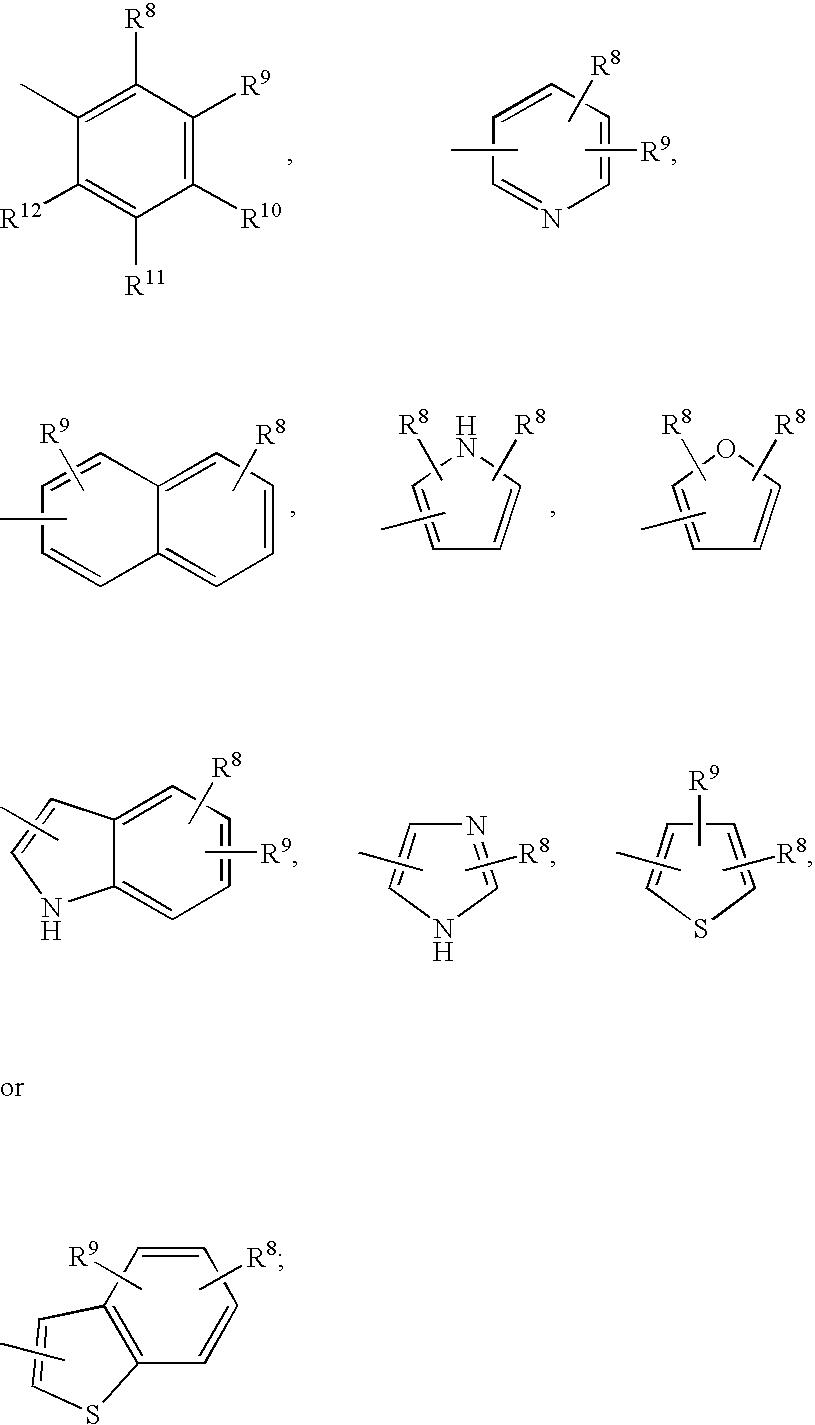Method of reducing C-reactive protein using growth hormone secretagogues
a technology of growth hormone and c-reactive protein, which is applied in the direction of drug compositions, immunological disorders, metabolism disorders, etc., can solve the problem that the subject needing treatment of is at risk of vascular events, and achieve the effect of improving the therapeutic
- Summary
- Abstract
- Description
- Claims
- Application Information
AI Technical Summary
Benefits of technology
Problems solved by technology
Method used
Image
Examples
Embodiment Construction
[0110] The present invention relates to a method of reducing C-reactive protein in a subject in need of treatment thereof. The method comprises administering to the subject in need of treatment thereof a therapeutically effective amount of at least one growth hormone secretagogue compound. In a particular embodiment, the subject in need of treatment thereof is at risk of having a vascular event. In another embodiment, the subject in need of treatment thereof has already had a vascular event.
[0111] In one embodiment, the vascular event is a cardiovascular event. In a particular embodiment the cardiovascular event is myocardial infarction.
[0112] In another embodiment, the vascular event is a cerebrovascular event. In a particular embodiment the cerebrovascular event is stroke (such as transient ischemic attacks (TIAs)).
[0113] In yet another embodiment, the vascular event is a peripheral vascular event. In a particular embodiment the peripheral vascular event is intermittent claudic...
PUM
| Property | Measurement | Unit |
|---|---|---|
| concentration | aaaaa | aaaaa |
| pharmaceutical composition | aaaaa | aaaaa |
| binding affinity | aaaaa | aaaaa |
Abstract
Description
Claims
Application Information
 Login to View More
Login to View More - R&D
- Intellectual Property
- Life Sciences
- Materials
- Tech Scout
- Unparalleled Data Quality
- Higher Quality Content
- 60% Fewer Hallucinations
Browse by: Latest US Patents, China's latest patents, Technical Efficacy Thesaurus, Application Domain, Technology Topic, Popular Technical Reports.
© 2025 PatSnap. All rights reserved.Legal|Privacy policy|Modern Slavery Act Transparency Statement|Sitemap|About US| Contact US: help@patsnap.com



